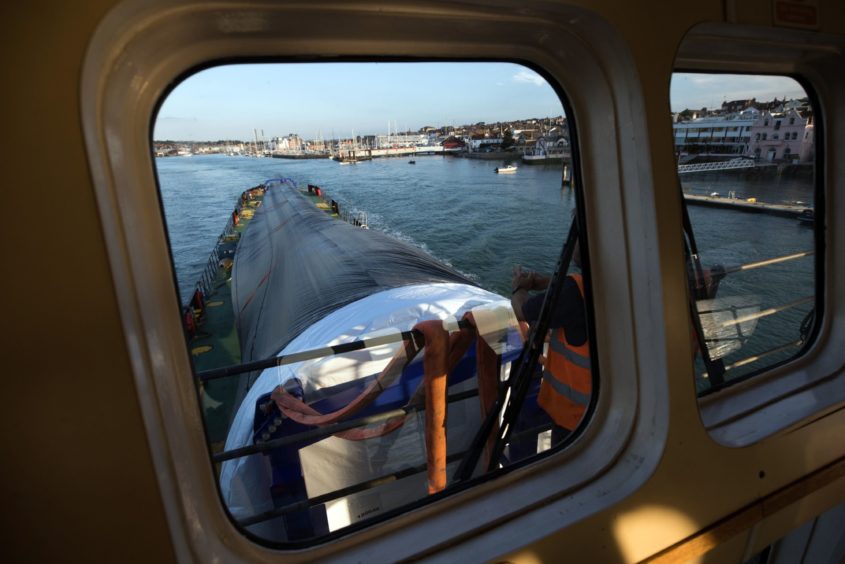 © Bloomberg
© Bloomberg Vestas Wind Systems A/S, the world’s biggest wind turbine manufacturer, will buy out its offshore joint venture partner in an all-share deal that looks to take advantage of an expanding industry at the heart of the energy transition.
The 709 million-euro ($830 million) deal for Mitsubishi Heavy Industries Ltd.’s 50% share in the partnership will integrate the offshore business into Vestas’s much bigger onshore wind operation. I
t’s a move that the Denmark-based manufacturer hopes will help it dominate the industry by 2025.
“Vestas is the leader in onshore wind, but to accelerate the energy transition and achieve our vision we must play a larger role in offshore,” said Henrik Andersen, Vestas’s chief executive officer.
Shares in Vestas rose 6.5% by 12:15 p.m. in Copenhagen.
The offshore wind market has become increasingly competitive as governments look to transition away from fossil fuels by, in part, installing massive turbines at sea.
While Vestas dominates onshore wind, the offshore business has struggled recently. Over the last five years, MHI Vestas Offshore Wind A/S had about 28% of the offshore wind turbine market, but last year it barely had any new orders. Profits too were hard to come by since the partnership started five years ago.
The lackluster performance led activist investor Giuseppe Bivona, of Bluebell Capital Partners, to send a letter to Vestas’s chairman and CEO earlier this year urging the company to take full control of the offshore business.
“We have been discretely and quietly campaigning for it by constructively engaging with the company since February 2020,” Bivona, partner and chief investment officer at Bluebell, said by email. “We are very pleased with the outcome.”
While Bluebell manages only about 70 million euros, Vestas is one of its largest holdings. The fund manager’s founders have previously advised the likes of Elliott Management and Jana Partners on activist campaigns and they have a history of working with former clients and shareholders to put pressure on their targets.
A Vestas spokesperson declined to comment on the Bluebell letter.
Competitive markets –
Part of the problem for the joint venture is that it’s been left behind as General Electric Co. and market-leader Siemens Gamesa Renewable Energy SA started selling turbines that are much larger and more efficient machines than MHI Vestas has to offer.
Vestas has its own plans to soon roll out a larger offshore turbine, but it’s missed out on orders by being the last to scale up. The Vestas CEO said that while it would have been better to have released the turbine already, there is an increasing volume of orders expected in the coming years that they can compete for with a new product.
“It would be nice if we’d had something a year ago,” Andersen said on a call with investors and analysts. “It’s about getting ready now and engaging with customers and being ready with the tech when its required to be ready.”
Overall, offshore wind is set to surge in the coming years as Europe turns to the technology to help deliver on its climate goals. A number of U.S. states have growing ambitions to develop wind farms off the east coast, while Japan and South Korea could prove to be lucrative markets in the future.
The merger of the offshore business into Vestas will help the company to optimize its current manufacturing footprint, Andersen said. Vestas and MHI will also establish a joint venture in Japan to sell wind turbines.
MHI Vestas’s current co-chief executive officer Philippe Kavafyan will leave the business after two-and-a-half years in the role, the company said.
